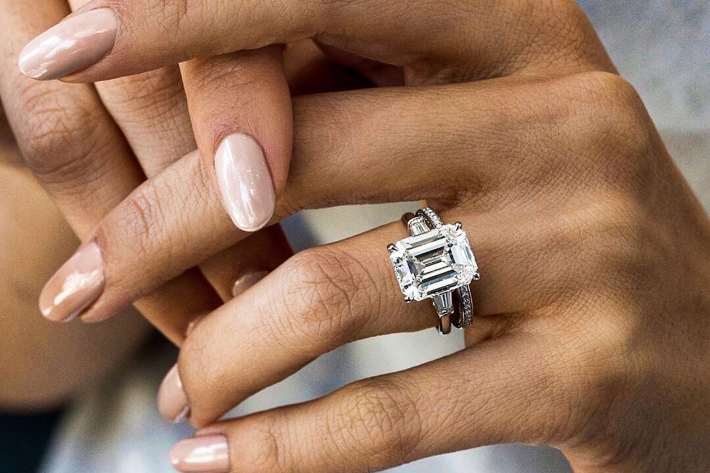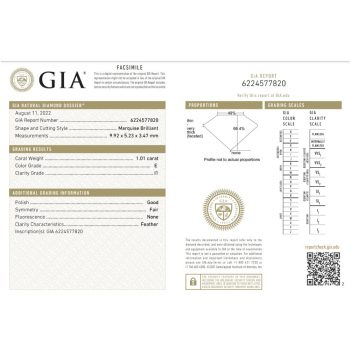Are Lab Grown Diamonds a Good Value?

Are Lab-Grown Diamonds a Good Value? Lab-grown diamonds have recently gained significant popularity as an alternative to natural diamonds. One of the primary reasons for their appeal is their value proposition. Lab-grown diamonds typically cost 20-40% less than their natural counterparts with similar specifications. This price advantage arises from the more controlled and efficient production process, which eliminates the costs associated with mining and transportation.
Additionally, lab-grown diamonds often exhibit fewer imperfections or inclusions, making them appear more visually appealing than some natural diamonds within the same price range. Their ethical and environmental advantages also enhance their intrinsic value, as they are produced with minimal environmental impact and without the ethical concerns associated with traditional diamond mining. But what happens to the value of this diamond down the road when you want to upgrade or sell your diamond?
Will Lab-Grown Diamonds Hold Their Value Over Time?
The long-term value of lab-grown diamonds is still a subject of debate within the industry. While natural diamonds have historically held their value and even appreciated over time, lab-grown diamonds are a relatively new addition to the market. Factors such as unlimited supply, consumer preferences, and market demand can influence their value over time.
Lab-grown diamonds are becoming more advanced in their production, resulting in cost savings for consumers. However, it’s crucial to understand that they do not hold the same investment potential as natural diamonds. Natural diamonds are highly valued for their rarity, while lab-grown diamonds can be created in large quantities. This abundance significantly reduces the resellable value of lab-grown diamonds. Unlike lab-grown diamonds, natural diamonds maintain their value over time.
How Can You Tell the Difference Between a Lab Diamond and a Real Diamond?
Distinguishing between lab-grown and natural diamonds can be challenging, as they share many physical and chemical characteristics. To differentiate them, specialized equipment like spectroscopy or a diamond tester is often required. These tools can detect differences in the diamond’s origin based on its crystal structure or impurities.
However, for the average consumer, there are some visual cues to look for:
Listed Price:
As mentioned earlier, lab-grown diamonds are more affordable than natural diamonds of the same size and quality. This helps consumers get a bigger look at a smaller budget. If the price tag for a sizeable diamond seems too good to be true, it’s most likely a lab-grown diamond.
Inclusions:
Natural diamonds often have inclusions like tiny crystals, while lab-grown diamonds typically have fewer or smaller inclusions, making them appear cleaner under magnification.
Grading Certificate:
A reputable jeweler should provide a grading certificate from a recognized gemological laboratory like GIA. This certificate will specify whether the diamond is natural or lab-grown.

Origin Statement:
Trusted jewelers are transparent about the origin of their diamonds, so don’t hesitate to ask. A reputable jewelry store will immediately tell you whether the diamond you are looking to purchase is natural or lab-grown.
Advantages of Buying a Lab-Grown Diamond:
- Ethical Sourcing: Lab-grown diamonds are conflict-free, eliminating concerns about supporting unethical practices in the diamond industry.
- Environmental Sustainability: The production of lab-grown diamonds has a significantly lower environmental footprint compared to diamond mining, which can be ecologically damaging.
- Cost Savings: Lab-grown diamonds offer a more budget-friendly option for those who desire a diamond’s brilliance without the high price tag.
Disadvantages of Buying a Lab-Grown Diamond:
- Value Uncertainty: They do not have the same long-term value appreciation as natural, earth-mined diamonds.
- Market Perception: Some consumers still perceive lab-grown diamonds as inferior or less romantic than natural diamonds, impacting their desirability. Earth-mined have the rare appeal as they take one billion years to form and are of the earth’s soil.
- Energy Intensive: The production of lab-grown diamonds requires a substantial amount of energy, which can concern environmentally conscious consumers depending on the energy source.
In conclusion, lab-grown diamonds offer numerous advantages, including affordability, ethical sourcing, and environmental sustainability. However, their long-term value retention remains uncertain, and consumers should be aware of the differences between lab-grown and natural diamonds to make informed purchasing decisions. Ultimately, choosing between lab-grown and natural diamonds depends on individual preferences and values.
Want to Create a Lab-Grown Diamond Jewelry Piece?
-
Categories:
- Jewelry Trends
- Engagement Rings
- Jewelry Trends & Gift Ideas
